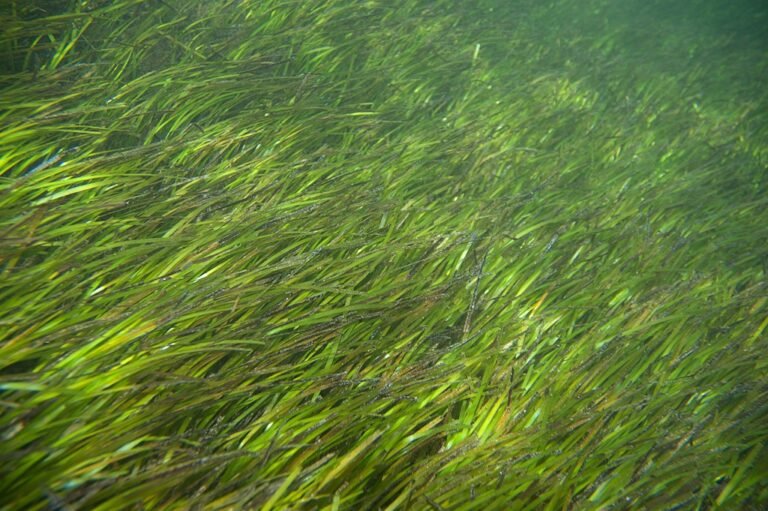Increase in the World’s Population Will Require an Increase in Sustainable Practices
The world is changing fast. More people are living longer and moving to cities, and that pushes demand for food, water, homes and energy. At the same time, the climate is making farming harder, seas are rising, and forests are shrinking. If we want a healthy planet for our children and grandchildren, we need to scale up practical, proven ways to use resources more carefully — not tomorrow, but now. According to the United Nations, the world population is still growing and is likely to reach about 10.3 billion by the mid-2080s before stabilising.

In This Article
- Why Population Numbers Change: What We Must Do
- Examples of Sustainable Practices that Work
- What Governments, Businesses, and Citizens Can Do Next (and How to Start Today)
- Conclusion: The Moral and Practical Choice
Why Population Numbers Change: What We Must Do
Population numbers alone don’t tell the whole story. Where people live, what they consume, and how technology and policy evolve matter as much as headcounts. Still, more people mean greater pressure on food systems, water supplies, and energy grids. One clear example: food systems already account for roughly one-third of global greenhouse gas emissions and are highly vulnerable to disrupted rainfall and extreme heat. The Intergovernmental Panel on Climate Change (IPCC) has found that climate-driven losses in crops, fisheries, and pastures are already occurring and will worsen unless farming practices change. These twin realities—population growth and fragile food systems—make sustainability urgent. According to the IPCC, climate change is already slowing agricultural productivity growth in many regions and increasing risks to food security.
At a systems level, the UN’s population projections reveal two important factors for planning. First, global growth is concentrated in a subset of countries where services and infrastructure are already stretched; nine countries alone are expected to experience very rapid increases in the coming decades. Second, many higher-income countries have already passed their population peaks and now face ageing workforces. This uneven picture means that one-size-fits-all advice will not work: sustainable solutions must combine investment, local knowledge, and well-targeted policies. UN demographic estimates indicate that while some countries will see population declines, others will double in size by the middle of this century, shifting where investments in sustainable practices are most urgently needed.
Examples of Sustainable Practices that Work
Talking about science is important, but real change happens when people try new things and pass them on. In rural East Africa, groups of smallholder farmers who joined training and input programs boosted both their harvests and their resilience. One farmer, Angelus Mwapinga from Tanzania, reported higher yields and the chance to diversify his crops after adopting improved inputs and techniques through a farmer-support program — an outcome that meant more food, higher income, and fewer days of hunger for his family.
This is not fiction: organisations working directly with farmers publish these personal stories alongside measured impact studies. One practical approach that is spreading is climate-smart agriculture — a set of methods that raise yields, help farms cope with extreme weather, and, where possible, reduce greenhouse gas emissions.
A collection of FAO case studies highlights many country-level examples where these practices improved incomes and strengthened food systems. According to One Acre Fund, farmers using targeted inputs and simple training often see measurable yield gains and improved household resilience.
International institutions back what farmers and local groups are doing. The World Bank points out that agrifood systems are a major source of emissions but receive a much smaller share of climate finance than they should; redirecting funds to smallholders and sustainable supply chains is a high-leverage move. In practice, that means financing low-cost irrigation, better storage to cut food loss, soil regeneration techniques, and access to weather-smart seed varieties. A report by the World Bank found agrifood systems cause roughly one-third of global emissions but receive about 4% of climate finance, with only a small portion going to smallholders — a gap that policymakers must close.
Experts who study these challenges are clear: the technical solutions exist, but scaling them needs money, training and fair markets. As Dr Jyotsna Puri of IFAD put it when reacting to the latest climate science, “With the right practices, small-scale farmers in developing countries can protect soils, ecosystems, and biodiversity and play an important role in storing carbon.” That is both a warning and an opportunity: support the people who feed the world, and you both reduce emissions and improve resilience.
What Governments, Businesses, and Citizens Can Do Next (and How to Start Today)
First: Invest where results are fast and fair. Smart public money and donor funding should flow into climate-smart farming, water management, and food-storage systems that reduce waste. Countries with rapid population growth need climate-resilient infrastructure: schools and health clinics, clean water, and reliable power. The UN report on global population trends emphasises that policy and finance should be directed to regions where growth will be highest and infrastructure weakest. It also stresses that investment planning must reflect national population trajectories so resources reach the people who will need them most in the coming decades.
Second: change diets and cut food waste. Across wealthy and middle-income countries, shifting diets toward more plant-based foods and reducing meat waste can lower emissions and free up land. The IPCC and related studies show that demand-side shifts are essential complements to supply-side improvements. According to the IPCC, combining supply-side actions (better production and transport) with demand-side shifts (diet change and reduced loss) reduces emissions and strengthens resilience.
Third: support smallholders and local innovators. Programs that combine seeds and finance with simple training — a model promoted by organisations such as the International Fund for Agricultural Development (IFAD) and the global CGIAR research partnership — deliver rapid, measurable benefits for families and local markets. Real farmer stories and impact reports show that even small investments in training and inputs can boost yields and reduce vulnerability to drought. Case studies from IFAD and CGIAR highlight how targeted support enables households to turn new techniques into stable income. Such support often raises yields and income, strengthening food security.
Fourth: redesign finance and markets. The World Bank and other institutions are clear that agrifood systems are underfunded relative to their climate impact. Redirecting climate finance toward land restoration, sustainable livestock management, and post-harvest storage will reduce emissions and strengthen local food supplies. Aligning finance with the real footprint of food systems is necessary to support a sustainable transformation, according to the World Bank.
Fifth: build urban resilience. More people will live in cities, so municipal planning must focus on public transport, efficient energy use, urban greening and local food systems. Cities that invest in efficient buses, better waste systems and local food hubs reduce per-person environmental costs while improving quality of life. The UN’s population work underscores the urban shift and the need for city-level sustainability planning.

A short table of headline numbers to guide decisions
| Metric | Snapshot (most recent) | Why it matters |
|---|---|---|
| World population (2024 mid-year) | ~8.2 billion. | Sets scale of demand for food, water, energy. |
| Projected mid-century population (2050) | ~9.6 billion (medium variant). | Planning window for infrastructure and climate adaptation. |
| Share of global emissions from agrifood systems | ~1/3 of total emissions. | Shows the climate impact of food systems; a target for mitigation. |
| Climate finance to agrifood systems | ~4% of total climate finance. | Reveals funding gap vs. sectoral importance. |
| Evidence on climate impacts to crops | Productivity growth slowed in many regions. | IPCC finds warming has already cut productivity growth in mid/low latitudes. |
Each figure above comes from the sources cited throughout this article and is summarised here for clarity. The linked documents provide full details and country-level breakdowns.
A Simple Roadmap for Three Common Audiences
Policymakers should plan using population projections. UN country data can help identify where schools, clinics, water systems, and climate-resilient farms are most needed. Combining family planning and education investments with infrastructure spending gives people real choices and supports long-term stability. The UN has suggested that aligning policy with national population trajectories is an effective planning tool.
Farmers and local groups should adopt and adapt proven practices. Use climate-smart techniques suited to local soils and markets—such as cover crops, improved seed varieties, rainwater harvesting, and low-cost storage. Seek local training and finance partners, as many programs deliver rapid returns. FAO case studies and NGO reports show real farm-level gains when local knowledge is combined with simple investments.
Consumers and cities should eat smarter, waste less, and demand better services. Small behavioural changes — such as buying seasonal food, reducing household waste, and supporting local markets — add up when millions adopt them. Cities can lead the way with efficient public transport, improved waste systems, and urban agriculture programs that reduce per-person footprints while increasing resilience. IPCC analyses highlight demand-side changes as essential components of any credible mitigation and adaptation strategy.
Conclusion: The Moral and Practical Choice
Population growth is not a problem to be solved with blame; it is a shared challenge that asks for shared solutions. The technical tools are already in our hands — climate-smart agriculture, smarter finance, urban planning, and effective social policies. What we need now is coordination: funding, local partnerships, and political will. As the UN’s projections make clear, the next decades will be uneven — some places will grow fast and need big investments, others will age and need different supports. A fair, evidence-based mix of policies and practical projects gives us a path to provide decent lives for more people while protecting the natural systems we depend on. According to the United Nations and the IPCC, combining targeted investment, stronger markets for farmers, and demand-side shifts is the clear route to make rising populations compatible with a healthier planet.







